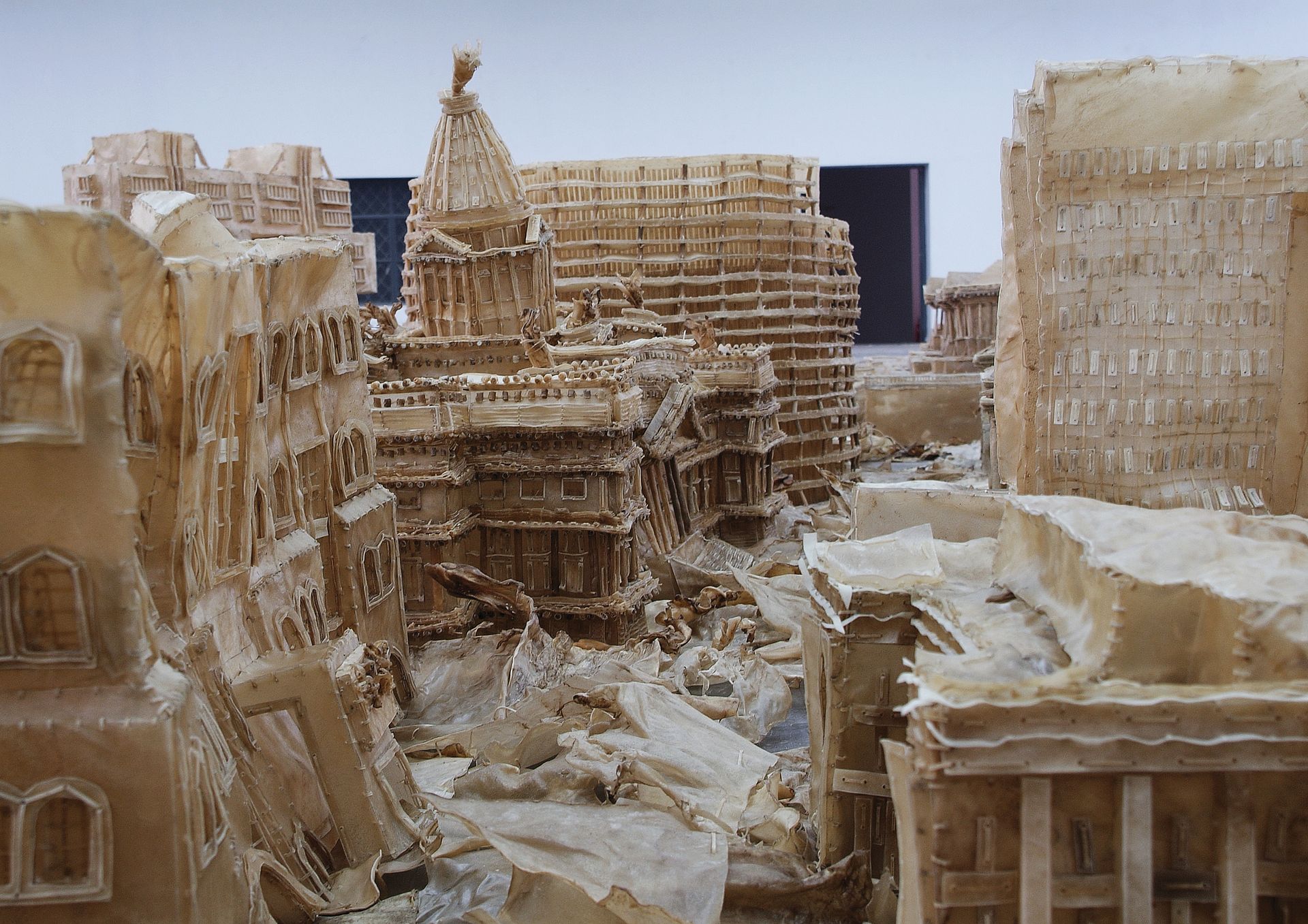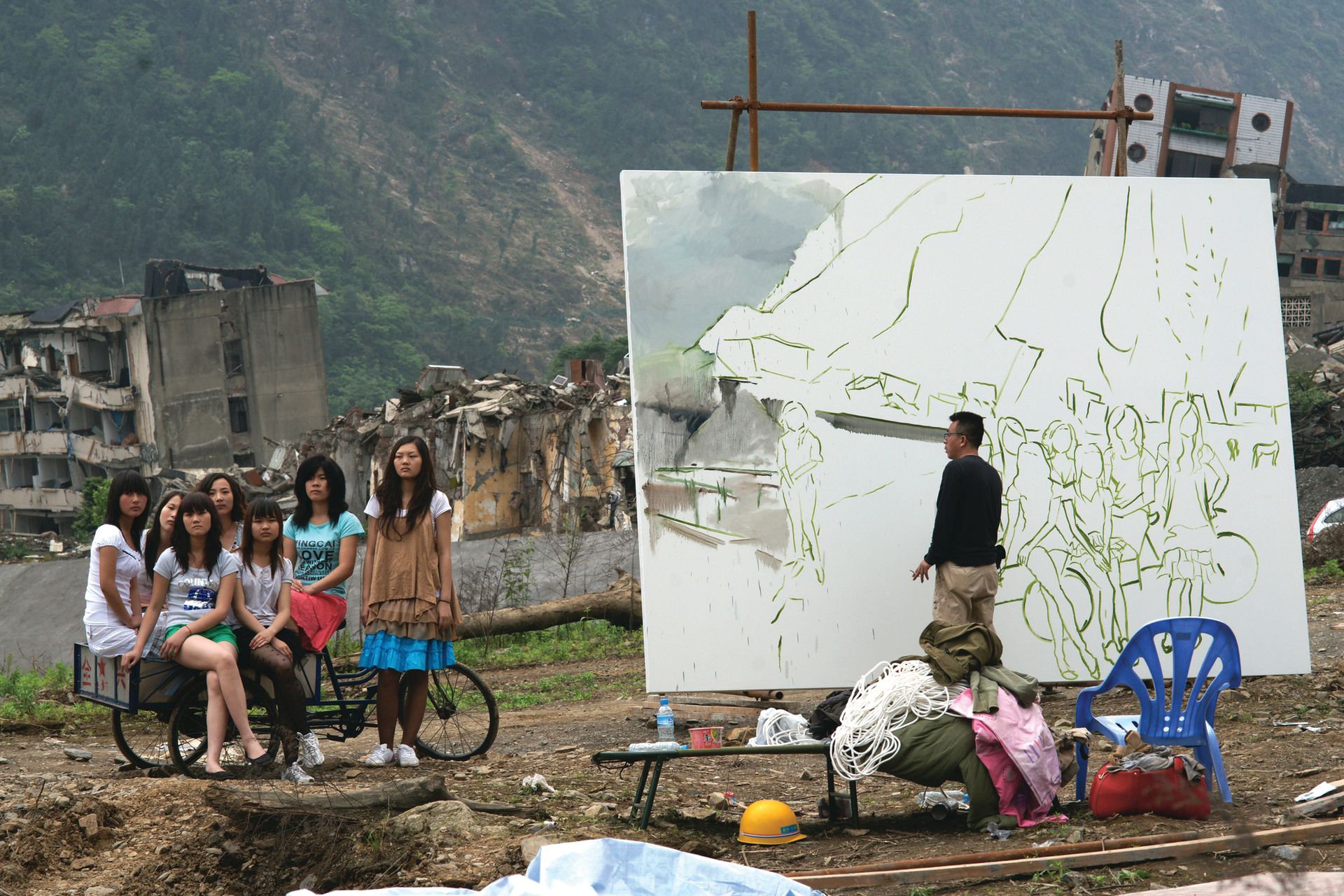The Chinese artist Cai Guo-Qiang, who has his studio in New York, has organised an exhibition in Doha, Qatar, of work by his countrymen. What About the Art? opened this month and includes work by 15 Chinese artists in a context celebrating craft and ideas above all else. For Cai, the show is a corrective to the standard framework in which Chinese art is presented, where politics or market considerations tend to hamper a close look at the work itself.
The exhibition is the result of almost three years of research by Cai and his studio. An accompanying hour-long documentary follows Cai’s conversations with critics, curators and artists as he prepared for the exhibition. The project is part of the 2016 Qatar-China Year of Culture and is supported by the China National Arts Fund, the Beijing Municipal Bureau of Culture and the Shanghai International Culture Association.
We spoke to Cai about the assumptions the exhibition aims to challenge.
The Art Newspaper: What is the idea behind the show?
Cai Guo-Qiang: The world has been paying attention to contemporary Chinese art for quite a while, but often from the perspective of the cultural context or socio-political issues the art presents, or by [looking at] its record auction results. What I hope to call attention to is the art itself.
I’m not saying that contemporary Chinese artists should not discuss their politics and responsibilities to society, but I want to shift the attention of the art world—both in and out of China—to a different angle. Artists can discuss and should pay attention to politics. A work like Freedom [2009] by Sun Yuan and Peng Yu, for example, alludes to a Chinese socio-political background that most people can understand and expect Chinese artists to speak up about: it represents the Chinese people’s desire for freedom. However, many artists are concerned about this issue. Why did I choose to exhibit this piece in particular? Because as an artist, you ultimately need to express yourself using the language of art. Putting the issue out there alone is not enough.
Art has been used for political purposes in many societies. A few decades ago, art was used as a catalyst for social reform [in Russia]. However, the Soviet Union disintegrated and we don’t remember many artists from that era. Similarly, a lot of artists today use art to [address] contemporary social issues. If we don’t innovate the art itself, what we create today will also be forgotten over time. More broadly, Old Masters like Velázquez, Goya and El Greco all portrayed their royal patrons. However, the stories of these patrons were eventually forgotten. What remained were the signature artistic expressions of these artists. That’s why I titled the exhibition What About the Art?
How did you prepare for the exhibition?
I picked the theme first, and over the course of nearly three years, my studio and I extensively researched [exhibitions of] contemporary Chinese art. There were several themes that everyone seemed to be interested in, themes that were easy to deliver to an international audience, such as politics in China, the pursuit of democracy [and] the Cultural Revolution—a lot of “red” themes. Another common theme was the artist’s identity, which was often presented against the recent history of China or in relation to traditional Chinese culture: ink painting, calligraphy, porcelain, for example.
But why do we always have to look at Chinese artists in [this] big context? Why can’t we talk about their art and pay attention to their individual efforts? Can’t we talk about a Chinese artist the way we talk about a Japanese artist, or an American artist? We hear comparisons between the auction records of Chinese artists and those of Picasso and Cézanne, but very few critics are evaluating their work. After conducting studio visits, the final 15 artists were picked as an acknowledgement of their constant and continuous exploration of creativity.
How is the show arranged?
Each of the 15 artists has their own space. An archival exhibition titled Timeline [traces] the development of official and unofficial Chinese art from 1949 to the present. I want Qatari audiences to understand that the artists in the exhibition are pushing against something, so Timeline gives some background to what is officially celebrated in China. Much of that work portrays communist leaders or anniversaries of party events. You also have annual state-organised exhibitions. This background introduces mainstream practice in China, a reality that artists from the country must face.
Another part of Timeline reviews the market for contemporary Chinese art. Here the audience will see that sales records for both state-supported artists and independent artists fluctuate simultaneously. When the economy goes up, everyone is selling. I want to shatter the pre-existing notion that artists in communist countries are victims because there are so many factors for one to consider behind the market. I am not denying that artists face more limitations from the government in China than in the US, but from the market perspective, artists in China are very commercial. It’s better that we no longer ignore this global dimension.
How does being an artist inform your curatorial ideas?
I am acutely aware of the difference between how curators, critics or historians talk about art versus how artists discuss art. When artists discuss art, it’s like animals getting together and discussing animals. It’s very direct—it’s primal. When curators, critics and art historians discuss artists, they do so as zoologists. They analyse by the book. But artists often think these theories are too vague, and that art itself is not as clear-cut. Of course, this only applies in certain cases. Good critics are always able to address issues of art from an artist’s perspective.
Three artists picked by Cai Guo-Qiang

Zhou Chunya, The Peach Garden (2015)
The artist (born 1955) is best known for colourful figurative canvases that recall traditional Chinese paintings and Expressionist works.

Liu Wei, Love It! Bite It! No. 2 (2007)
The Beijing-based artist, who is represented by Lehmann Maupin, often explores China’s rapid urbanisation through installations and sculpture.

Liu Xiaodong, Out of Beichuan (2010)
The artist and film-maker Liu Xiaodong, who is represented by Lisson Gallery, often paints en plein air to create works about modern China.
• What About the Art?, Qatar Museums, Doha, until 16 July

